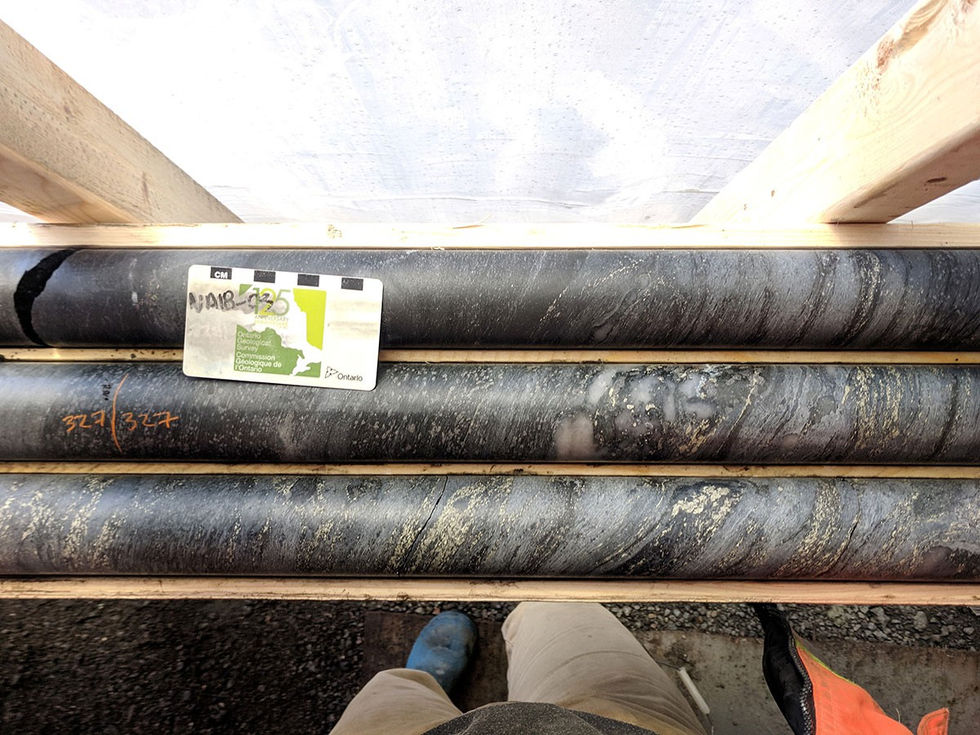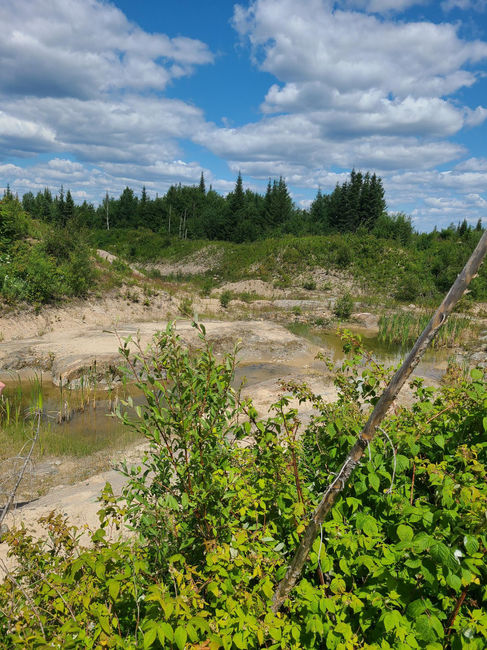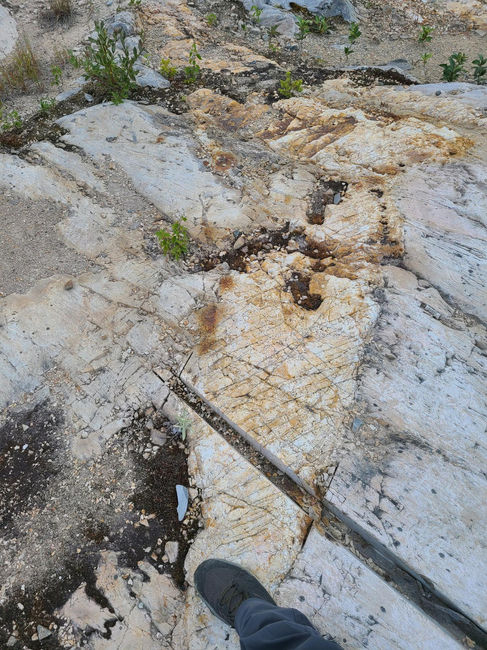Overview
Located in northeastern Ontario, the North Abitibi Project covers a 10 km long strike length that covers approximately 4,240 hectares in Canada’s prolific Abitibi Greenstone Belt where over 200 million ounces of gold have been discovered and produced. The Property straddles the Casa Berardi Break approximately 40 km west of Hecla Mining Corp.’s Casa Berardi Mine and 55 km south of the Detour Lake Mine, operated by Agnico Eagle.
Limited historical shallow drilling has intersected gold mineralization for approximately 3 km of total strike. Gold mineralization has been drilled to a vertical depth of approximately 300m. Historical drilling highlights include: 6.1 g/t Au over 6.0 m and 23.4 g/t Au over 1.5 m.

Location and Access
The property is located in the Larder Lake Mining Division, approximately 20 km west of the Ontario/Québec border and 120 km northeast of Cochrane, Ontario. Vehicle access to the property is available year-round via the gravel roads off Highway 652 which have seen increased logging activity in recent years, improving access and infrastructure. Power lines and paved roads can be accessed northwest of the property due to the opening of the Detour Lake Mine.
Geology
The North Abitibi Property is situated in the northwest corner of the Archean age Abitibi Greenstone Belt which hosts the Matagami, Selbaie, Joutel and Casa-Berardi mining camps in Quebec and the Detour Lake Mine in Ontario. At North Abitibi rock units comprise three main east-trending and steeply dipping assemblages. The northern most is predominately sedimentary rocks and gneisses, the central is a mixed assemblage of predominately volcanic rock and, the southern is sedimentary. The boundaries between the central assemblage and sedimentary rocks to the north and south are sharp and correspond to the Casa Berardi “Break”. The central assemblage can be traced eastward to Quebec and the Casa Berardi Mine. All of the known gold occurrences in this segment of the greenstone belt are within this assemblage.
The Property is underlain by a 10 kilometre long portion of the central assemblage of north-dipping mafic, intermediate, and felsic volcanic rock, volcaniclastic tuff, conglomerate, coarse to fine-grained sedimentary rock and lesser oxide facies iron formation. These rocks are intruded by quartz and feldspar-rich sills locally known as the Spade Lake porphyry. Gold is hosted by stratabound pyritic, sericitic schists up to 40 m thick within felsic and volcaniclastic rocks at the Spade Lake Zone and as pyritic tuffs containing veins of quartz-carbonate-pyrite at the contact between felsic pyroclastic rocks and iron-carbonate rich mafic volcanic rocks at the Road Gold Zone. A number of other gold occurrences are known from historic work but have yet to be adequately investigated by NewOrigin.
Mineralization
Gold has been identified in three primary zones which were the focus of historic drilling: the Spade Lake Zone, the Road Zone and the Club Lake Zone. In the Spade Lake Zone drilling intersected gold mineralization returning values of 23.4 g/t Au over 1.5m, 7.9 g/t Au over 4.5m and 0.52 g/t Au over 26.0m. Higher grade mineralization has been intersected within broad, lower grade halos containing anomalous gold over thicknesses greater than 40m.
In the Road Zone, drilling intersected gold mineralization with values of 1.3 g/t over 10.1m and 17.8 g/t over 1.6m. In addition, grab samples from trenches excavated by NewOrigin have returned assay values of up to 43 g/t Au. The Club Zone has yet to be examined by the Company.
Zinc, lead and silver mineralization has also been identified on the property. Drilling has intersected zinc values up to 0.57%, lead values up to 0.53% and silver values up to 140.0 g/t were returned from grab samples at the Road Zone. These metal values and their geological setting indicate potential for discovery of base and precious metal massive sulphide deposits.
The Spade Lake and Road Gold Zones have been traced over a long distance near surface but have only been drilled to shallow depths. They are at a stage of exploration where detailed diamond drill programs are required to identify higher-grade portions of these zones and define the extent and economic significance of these gold zones at depth. Other gold occurrences have been identified by drilling elsewhere on the property and detailed geophysical surveying and drilling is warranted to advance these discoveries.

Work History
The majority of exploration at North Abitibi was conducted by Newmont and Cogema Canada during the 1980’s. Only limited and sporadic campaigns have been conducted since then. Extensive overburden cover limited the effectiveness of the then conventional surface exploration campaigns. NewOrigin has compiled and interpreted a large geophysical and diamond drilling database from this previous work, including assay data from over 100 drill holes spread across the length of the property. Twenty-one (21) of these holes reported at least one sample of greater than 2.0 g/t Au across a minimum 1.0 m sample interval.
Over recent years, NewOrigin has completed induced polarization (“IP”) geophysical surveying at selected areas which included “deep-looking” IP. Trenching, geological mapping and geochemical sampling has been conducted at the Road Zone. NewOrigin has drilled 29 holes since acquiring the property. These have been successful in confirming and extending known gold zones, testing new geophysical anomalies and identifying new gold occurrences. NewOrigin’s work along with extensive 3-D modelling of all exploration data has proven the exploration concept and prospectivity at North Abitibi. Additional work is now warranted to identify prospective new targets for follow-up drilling.
Gallery











